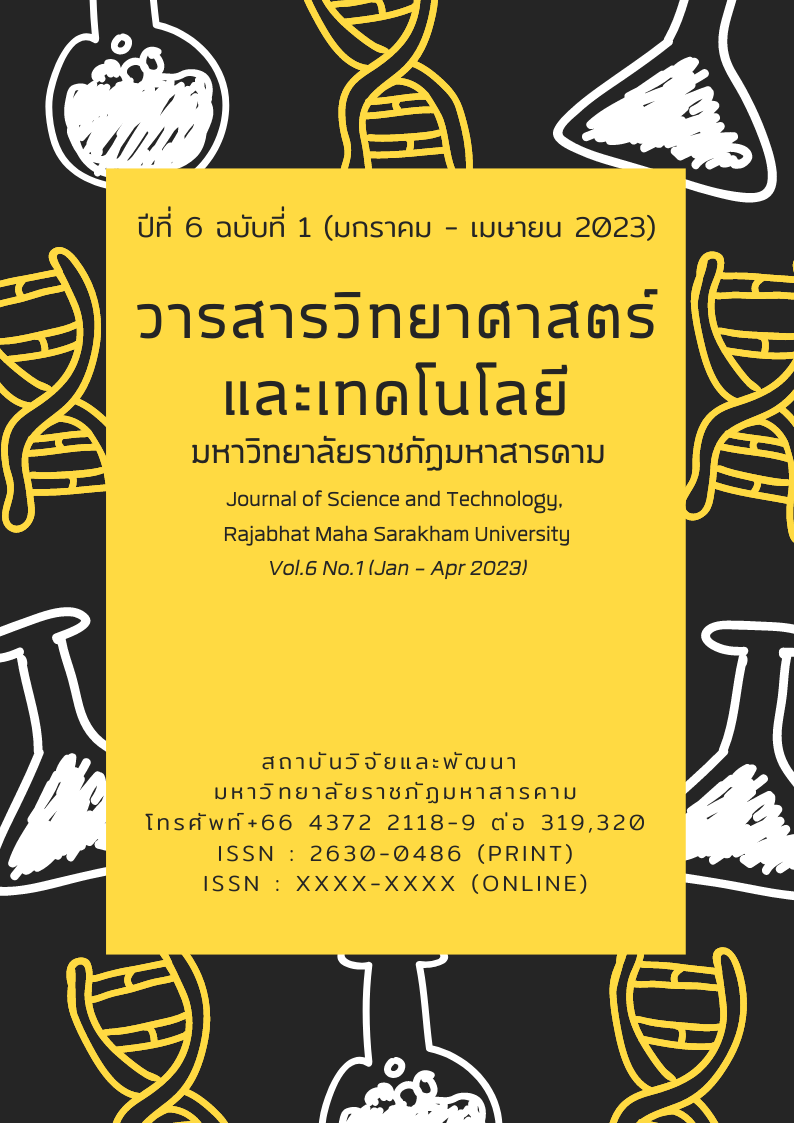Comparing Landsat 8 for monitoring soil salinity in dry and wet seasons
Keywords:
Soil salinity, Remote sensing, Landsat-8, IndexAbstract
The present paper was conducted to compare Landsat 8 OLI satellite data for monitoring soil salinity in dry and rainy seasons. To this end, three Analytical Algorithms had been selected: the Generalized Linear Model (GLM), the Random Forest model (RF), and the Support Vector Machine model (SVM). The model performance was assessed using Root Mean Square Error (RMSE) and Coefficient of determination (R2), along with various levels of soil salinity data obtained from Landsat 8 images. As a result, in case of the soil surface is at a constant depth of 0.30 m, it was observed that the Random Forest model of Landsat 8 satellite images presented the highest correlation compared to Root Mean Square Error (RMSE) which provided the lowest value at 8.218. In addition, a coefficient of determination (R2) calculated for this model is equal to 0.814. Hence, this study can be effectively used in detecting and mapping salinization by applying Landsat 8 with other analysis methods.
References
Acharya, T. D., Lee, D. H., Yang, I. T., & Lee, J. K. (2016). Identification of water bodies in a Landsat 8 OLI image using a J48 decision tree. Sensors, 16(7), 1075.
Allbed, A., L. Kumar, and P. Sinha, Mapping and modelling spatial variation in soil salinity in the Al Hassa Oasis based on remote sensing indicators and regression techniques. Remote Sensing, 2014. 6(2): p.1137-1157.
Belgiu, M. and L. Drăguţ, Random forest in remote sensing: A review of applications and future directions. ISPRS journal of photogrammetry and remote sensing, 2016. 114 : p. 24-31.
Corwin, D.L., Past, present, and future trends in soil electrical conductivity measurements using geophysical methods. 2008: CRC Press, Taylor & Francis Group: New York, NY, USA.
Csillag, F. , L. Pásztor, and L. L. Biehl, Spectral band selection for the characterization of salinity status of soils. Remote sensing of environment,1993. 43(3): p. 231-242.
Eldeiry, A. and L.A. Garcia, Detecting soil salinity in alfalfa fields using spatial modeling and remote sensing. Soil Science Society of America Journal, 2008. 72(1): p. 201-211.
Guo, Y., Huang, J., Shi, Z., & Li, H. (2015). Mapping spatial variability of soil salinity in a coastal paddy field based on electromagnetic sensors. PloS one, 10(5), e0127996.
Hu, J., Peng, J., Zhou, Y., Xu, D., Zhao, R., Jiang, Q., Fu, T., Wang, F & Shi, Z. (2019). Quantitative estimation of soil salinity using UAV-borne hyperspectral and satellite multispectral images. Remote Sensing, 11(7), 736.
Kalra, N. and D. Joshi, Potentiality of Landsat, SPOT and IRS satellite imagery, for recognition of salt affected soils in Indian Arid Zone. International Journal of Remote Sensing, 1996.17(15): p. 3001-3014.
Land Development Department. (2010). Chemical Inspection Process Manual. https://www.ldd.go.th/PMQA/2553/Manual/OSD-03.pdf
Pakdee, Growth of Suaeda maritime (L.) Dumort. in salinity areas. Veridian E-journal Science and Technology Silpakorn University, 2016. 3(6): p. 380-389.
Pongsathornwiwat, Kowwilaisaeng, SAP ERP. Thai Journal of Operations Research: TJOR, 2021. 9(1): p. 106-119.
Wang, D., Ma, R., Xue, K., & Loiselle, S. A. (2019). The assessment of Landsat-8 OLI atmospheric correction algorithms for inland waters. Remote Sensing, 11(2), 169.
Wang, J., Ding, J., Yu, D., Teng, D., He, B., Chen, X., Ge, X., Zhang, Z., Wang, Y., Yang, X., Shi, T & Su, F. (2020). Machine learning-based detection of soil salinity in an arid desert region, Northwest China: A comparison between Landsat-8 OLI and Sentinel-2 MSI. Science of the Total Environment, 707, 136092.
Wang, X., Zhang, F., Ding, J., Latif, A., & Johnson, V. C. (2018). Estimation of soil salt content (SSC) in the Ebinur Lake Wetland National Nature Reserve (ELWNNR), Northwest China, based on a Bootstrap-BP neural network model and optimal spectral indices. Science of the Total Environment, 615, 918-930.



